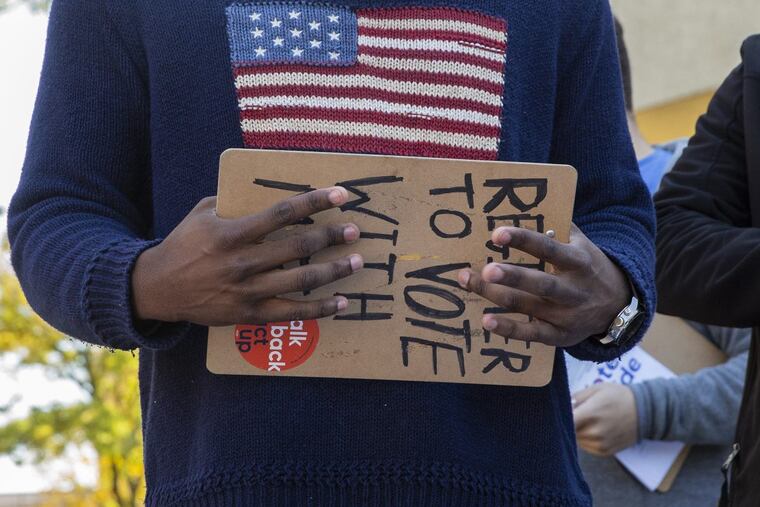Youth voter turnout was higher in midterms. But hardly ‘historic’ for youth vote.
Voters ages 18 and 29 turned out at higher rates than they usually do in midterm elections, early exit polls show, but still were underrepresented compared to their share of the population.

Brendan Stec, 22, who has voted in past elections, decided to sit out the 2018 midterms. The Drexel University senior said he wasn't motivated to vote, and, besides, he had other things on his plate — such as trying to find a job after college.
"I feel disconnected to the widening polarity of the political world in America," said Stec, an engineering and business major. "I didn't have a real reason to feel like I wanted to be a part of that. I have other priorities."
Stec had plenty of non-voting company among this peers.
With massive efforts, vote-drive organizers were hoping for a "historic" turnout in the midterm elections among voters in the 18-to-29 age group. But although the youth vote was higher than in some previous midterm elections — as it was for all age groups — evidently it was well shy of historic locally.
In Pennsylvania and New Jersey, the 18-to-29 group makes up about 1 in 5 adult citizens, according to estimates from the Census Bureau. But in this month's election, young voters cast only 12 percent to 14 percent of the votes, according to national exit polling and surveys of the two states.
That means that although young voters may have voted at a higher rate than in past elections, the surge was essentially neutralized by higher turnout in other age groups.
It is impossible to say who would benefit most from increased youth turnout, but a Pew Research Center report published in the spring suggested that it likely would be Democratic candidates because millennials have become increasingly liberal. That represents a change, said Dan Hart, a Rutgers-Camden professor who specializes in youth voter turnout.
"It hasn't always been that way," he said, citing voter behavior in the 2000 presidential election race between George W. Bush and former Al Gore, which was much more homogeneous across age groups.
College is a "disruptive force" that can pull young voters out of the electorate because they are likely away from their homes and need to cast absentee ballots or travel home to vote in person, Hart said.
NextGen Pennsylvania was out in force trying to energize potential voters on campuses. In the week before Election Day, NextGen Pennsylvania's state director Jarrett Smith and other staffers and volunteers were at Temple University around a table in the center of campus, calling out to passing students: "Pledge to vote! Free pizza!"
"We really want to create historic turnout," Smith said.
Also, students in Philadelphia, its suburbs, and the Pittsburgh area involved in efforts to push stricter gun laws worked to register voters.
Caroline Perry, a North Carolina resident earning a graduate degree at Penn in cancer biology, said she voted by absentee ballot in the midterm because of how heavily advertised "get out the vote" efforts were. And it's the first time she ever voted in a midterm.
"This is also the first midterm election since I've been out of college. When I was in college, I wasn't really paying attention," she said. "Now that I'm working, I thought, 'Yeah, it's probably important.""
"It might be considered lazy," said Stec, the Drexel student who decided not to vote.
And if young people sit out elections, they'll lose clout with politicians, said Hart, the Rutgers professor.
"You will get a systematic shifting of legislative emphases toward the interest of those who do vote and away from young people," he said.
Young voters are particularly disinclined to participate in midterm and municipal elections, Hart said. It's even worse in large cities such as Philadelphia.
"In large American cities, [turnout] is just dismal," he said.
Still, Hart said, he sees hope in the increased turnout this year among the young.
"As someone concerned about the electorate, I'm glad to see that the exit polls are suggesting enhanced participation, if not at the rates we'd ideally like to see," he added.